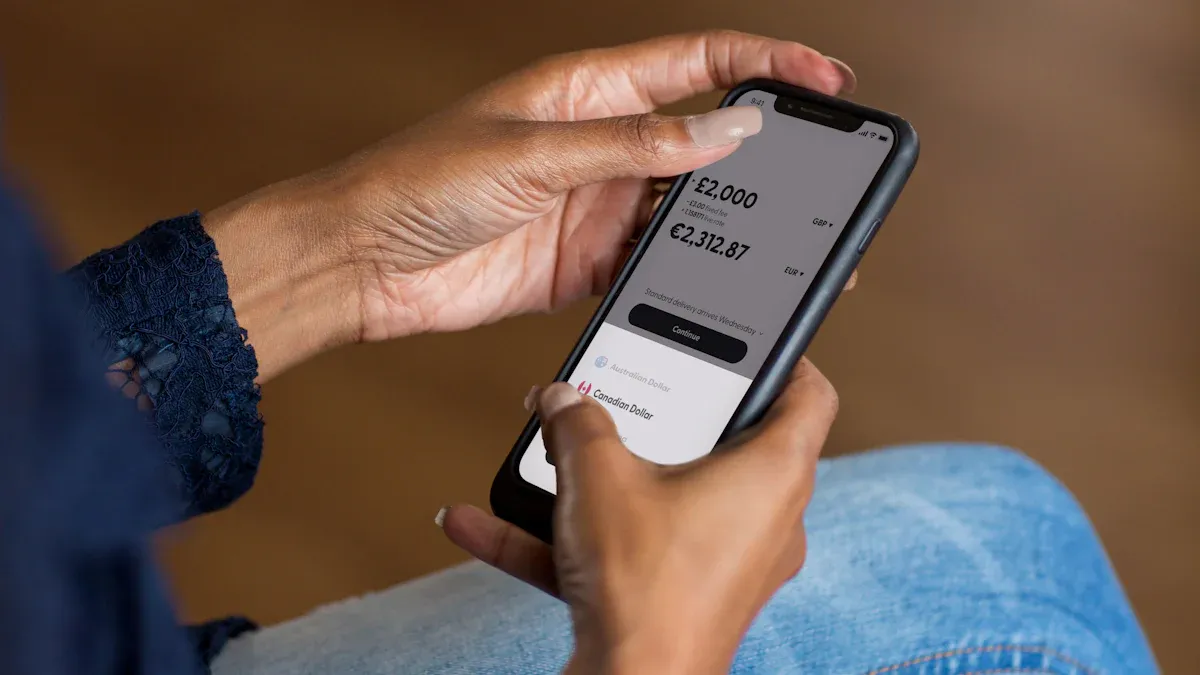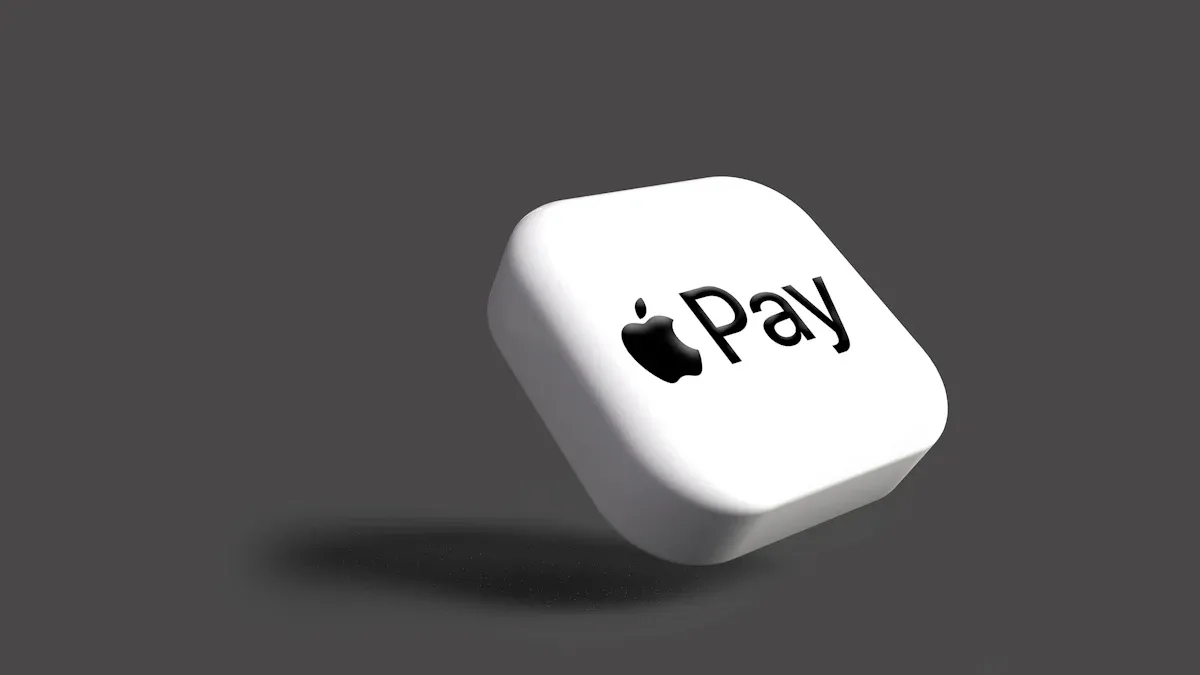- EasyCard
- Trade
- Help
- Announcement
- Academy
- SWIFT Code
- Iban Number
- Referral
- Customer Service
- Blog
- Creator
Is it simple and safe to transfer money using Apple Pay?

Image Source: pexels
Yes.
This answer is very clear. Apple Pay transfers were designed from the start to achieve both convenience and security. It does not compromise between the two but deeply integrates them. Users enjoy smooth operations while their funds and personal information are strictly protected. This design philosophy runs through the entire payment experience.
Key Points
- Apple Pay transfer function is simple and easy to use; users can directly send funds in iMessage with a very intuitive process.
- Apple Pay protects users’ funds through biometric technology (Face ID and Touch ID) and data encryption (tokenization).
- Even if the device is lost, users can remotely lock the device through the “Find My” feature and pause Apple Pay payment functions.
- Users need to carefully verify recipient information and be alert to various payment scams; this is the last line of defense for protecting funds.
- Apple Pay transfers are both convenient and secure, but users still need to remain vigilant and only transfer to trusted people.
Apple Pay Transfers: An Extremely Simple Operating Experience

Image Source: unsplash
Apple Pay’s design philosophy is to hide complex technology behind a simple interface. Its transfer function perfectly embodies this, simplifying the cumbersome steps in traditional payments to a few taps. The core of the user experience is smoothness and intuitiveness, with almost no learning cost.
Directly Initiate in iMessage
The most prominent feature of Apple Pay transfers is its seamless integration with the “Messages” (iMessage) app. Users do not need to exit the conversation or open any third-party payment app; transferring money is as simple as sending a message. The entire process can be completed within the chat box, greatly improving efficiency.
The specific operation process is very intuitive:
- Users first open the “Messages” app and enter the conversation with the recipient.
- Then, tap the plus icon next to the input box and select the Apple Pay function.
- Next, enter the amount to send; the system provides plus/minus buttons or a numeric keypad for precise input.
- Finally, tap send and authorize with Face ID or Touch ID; the payment instruction is issued.
This process completely eliminates the steps of entering bank account numbers, names, and other cumbersome information required in traditional transfers, making small fund exchanges easy and fast.
Funds Deposited and Used Instantly
When users send funds via Apple Pay, the money arrives almost instantly in the recipient’s Apple Cash account. This “near-instant” arrival speed allows funds to be used immediately, meeting urgent or temporary payment needs.
After the recipient receives the funds, there are multiple flexible ways to use them:
- Direct Spending: Apple Cash balance can be used like a bank card through Apple Pay for shopping in supported stores, websites, or apps.
- Online Payments: For online merchants that do not support Apple Pay, users can use the Apple Cash virtual card number for payment as long as the merchant accepts Visa.
- Withdraw to Bank: Users can also easily withdraw the Apple Cash balance to their linked bank account.
Warm Tip: When withdrawing funds from Apple Cash to a bank account, users have two options. Standard transfer is free and usually takes 1 to 3 business days to process, excluding weekends and bank holidays. If users need funds urgently, they can choose instant transfer, but a fee is required, which can be up to 15 USD.
Unique Advantages of Native Integration
The convenience of Apple Pay transfers comes from its deep integration as a native function of the operating system. This sets it apart from other payment methods in terms of experience.
Compared to traditional bank transfers, it eliminates the steps of logging into online banking and entering lengthy recipient information. Compared to many third-party payment apps, its advantage is that users do not need to download additional apps, register new accounts, or rebind bank cards. As long as users have set up Apple Pay, the transfer function is ready to use.
This native integration means fewer operation steps, faster startup speeds, and a more unified system experience. It leverages users’ existing Apple ID and device security settings to seamlessly integrate payments into daily communication scenarios, truly achieving the word “simple.”
Multiple Protections: Core Security Mechanisms of Apple Pay

Image Source: unsplash
If “simple” is the external manifestation of Apple Pay transfers, then “secure” is its unbreakable internal core. Apple Inc. builds a solid defense line for users’ fund security through multi-layered protection measures that deeply combine hardware and software. This security system is not a single technology but a comprehensive protection system composed of biometric identification, data encryption, and remote management.
Biometric Technology Authorization
Every Apple Pay transaction must be personally authorized by the user; this is the first and most important barrier to prevent unauthorized payments. Apple devices use their industry-leading biometric technologies—Face ID and Touch ID—to complete this process.
These technologies are not simple software functions but are deeply embedded in the hardware level.
- Face ID: It uses the TrueDepth camera system to project tens of thousands of invisible light points onto the user’s face, creating a precise 3D geometric map. This data is converted into a mathematical representation and compared with encrypted data stored in the device’s “Secure Enclave.”
- Touch ID: It captures the fine details of the user’s fingerprint through a high-resolution sensor and similarly compares it with data stored in the “Secure Enclave.”
This hardware-level design ensures that only the owner can authorize payments. Some may worry whether masks or photos can fool the system, but Apple’s design accounts for this. Face ID has an “attention aware” feature that requires the user to open their eyes and look at the screen, effectively resisting photo and most mask deception attacks. Its security has also been verified in data.
| Biometric System | Probability of Random Person Unlocking Device |
|---|---|
| Touch ID | One in 50,000 (1/50,000) |
| Face ID | One in 1,000,000 (1/1,000,000) |
Such a low cracking probability means that transactions authorized through biometrics have extremely high security.
Data Encryption and Tokenization
Another core security technology of Apple Pay is “Tokenization.” When a user first adds a bank card to Apple Pay, a secure and reliable process is initiated that fundamentally protects the user’s real card information.
The process is roughly as follows:
- The user adds a bank card on the device, entering or photographing card information.
- Apple securely sends this information to the issuing bank for verification.
- After the bank verifies it, it does not send the real card number back to Apple. Instead, the bank generates a unique “Device Account Number,” which is the “Token.”
- This “Token” is encrypted and sent back to the user’s device, securely stored in the “Secure Enclave.”
From then on, whether for online payments or contactless card swipes, the device provides only this “Token” to the merchant, not the real bank card number. Each transaction also generates a one-time dynamic security code to verify the validity of that transaction.
| Comparison Item | Traditional Physical Card | Apple Pay (Tokenization) |
|---|---|---|
| Data Transmitted in Transaction | Real bank card number | Encrypted “Token” and one-time security code |
| Risk of Information Leakage | High; merchant database breach can lead to card number theft | Extremely low; even if “Token” leaks, it cannot be reverse-engineered to the real card number |
| Card Skimming Risk | Exists; magnetic stripe information can be copied by illegal devices | Does not exist; transactions never expose the physical card |
Apple strictly adheres to its privacy policy. The user’s real card number is never stored on the device and is never saved on Apple’s servers. Apple cannot see the user’s transaction content, amount, or location, thereby maximizing the protection of user payment privacy.
Security Measures After Device Loss
Even if a user unfortunately loses their iPhone or Apple Watch, its built-in fund security protections remain effective. This is worlds apart from losing a physical wallet full of cash and bank cards.
First, even if someone else gets the device, they cannot make any payments. Because every transaction requires the owner’s own Face ID or Touch ID authorization, which is a hardware barrier that others cannot bypass.
Second, users can perform remote operations through the “Find My” function, adding “double insurance” for fund security.
- Users can log in to iCloud.com/find from another Apple device or through a browser.
- Select the lost device from the device list.
- Activate “Lost Mode.”
What does activating “Lost Mode” mean? Once “Lost Mode” is activated, the system immediately remotely locks the device and automatically pauses all bound Apple Pay card functions on the device. This means that even if someone happens to crack your lock screen password (extremely unlikely), they cannot use Apple Pay for any purchases. If the device is later recovered, users only need to unlock it and log in to their Apple ID to easily restore all functions.
User Must-Know: The Last Line of Defense for Fund Security
Advanced technology provides a solid security foundation for Apple Pay, but user vigilance is the last and most critical line of defense for protecting funds. Understanding potential risks and adopting correct operating habits allows users to effectively avoid losses while enjoying convenience.
Verify Recipient Information
Apple Pay transfers are considered private transactions between users, so carefully verifying the recipient’s phone number or email address before clicking send is crucial. A tiny input error can lead to funds being sent to the wrong person.
If a user accidentally sends funds to the wrong person, the handling depends on the recipient’s status:
- If the other party has not yet accepted the payment: The user can immediately cancel the transaction. Just find the payment in the “Messages” conversation, tap it to enter the “Wallet” app, and select “Cancel Payment”.
- If the other party has already accepted the payment: The transaction cannot be canceled. This usually happens when the recipient has enabled automatic receipt. In this case, the user’s only option is to contact the recipient and request a refund.
Important Tip: Apple officially recommends that users only send funds to people they know and trust. Since this is a private transaction, if the funds have been accepted, Apple cannot guarantee to help users recover the money.
Beware of Payment Scams
Scammers use various means to trick users into transferring money. Staying vigilant and recognizing common scam tactics is a necessary skill to protect personal property from infringement.
Common scam types include:
- Phishing Message Scams: Users may receive text messages or emails pretending to be from Apple official, falsely claiming that their account has security issues or is suspended, and attaching a fake link. Once users click the link and enter their Apple ID and password, account information is stolen.
- Fake Seller Scams: On some online trading platforms, scammers pretend to be sellers and insist on payment via Apple Pay. They disappear after receiving the money and do not ship the goods.
- Requesting Verification Code Scams: Scammers pretend to be customer service personnel and ask users for the two-factor authentication (2FA) verification code under the pretext of “helping solve problems.” This verification code is the last security barrier of the account and must never be disclosed to anyone.
Safe Operation Guide
- Never click links in text messages or emails from unknown sources. Apple’s official email addresses usually end with @apple.com or @itunes.com.
- Apple official personnel will never ask users for passwords or two-factor authentication codes via phone or message.
- If suspicious messages are received, users can screenshot them and send them via email to
reportphishing@apple.comfor reporting.
Overall, Apple Pay transfers achieve extremely simple operations through deep system integration while providing strong security guarantees with biometric identification, data encryption, and device management. Its security design has also received high recognition in multiple third-party evaluations.
Therefore, it is indeed a choice that is both simple and secure.
Final Reminder 💡 Technology provides a solid shield, but user vigilance is the last line of defense. While enjoying convenience, users should always take responsibility for their transaction behavior, only transfer to trusted people, to truly achieve a worry-free payment experience.
FAQ
Is the Apple Pay transfer function available in all regions?
No. Apple Pay transfers are currently mainly available in the United States and a few other countries and regions. Users need compatible devices and debit cards supported by issuing banks. Users should confirm whether their region supports this service before use.
Does using Apple Pay transfers incur fees?
Sending funds with a debit card is usually free. However, if users choose to transfer with a credit card, the issuing bank charges a fee of about 3% handling fee. Instant transfers when withdrawing from Apple Cash to a bank account also require a fee.
What if the recipient has not set up Apple Pay?
If the recipient has not set up Apple Pay, they will receive an iMessage with setup instructions. The recipient has 7 days to accept the payment. If not accepted after 7 days, the funds are automatically returned to the sender.
Are there limits on transfer amounts?
Yes, Apple Pay transfers have limits. There are restrictions on single transactions and rolling transaction amounts within seven days. For example, the minimum per transaction is 1 USD, and the maximum is 10,000 USD. Specific limits may vary based on the user’s account history and settings.
*This article is provided for general information purposes and does not constitute legal, tax or other professional advice from BiyaPay or its subsidiaries and its affiliates, and it is not intended as a substitute for obtaining advice from a financial advisor or any other professional.
We make no representations, warranties or warranties, express or implied, as to the accuracy, completeness or timeliness of the contents of this publication.




Contact Us
Company and Team
BiyaPay Products
Customer Services
is a broker-dealer registered with the U.S. Securities and Exchange Commission (SEC) (No.: 802-127417), member of the Financial Industry Regulatory Authority (FINRA) (CRD: 325027), member of the Securities Investor Protection Corporation (SIPC), and regulated by FINRA and SEC.
registered with the US Financial Crimes Enforcement Network (FinCEN), as a Money Services Business (MSB), registration number: 31000218637349, and regulated by FinCEN.
registered as Financial Service Provider (FSP number: FSP1007221) in New Zealand, and is a member of the Financial Dispute Resolution Scheme, a New Zealand independent dispute resolution service provider.



















